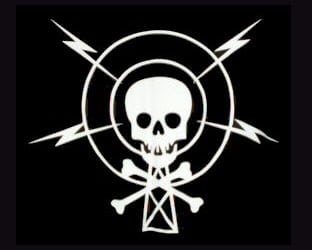The NAB is counting down the 100 days to the centennial anniversary of the first commercial radio broadcast, which took place on November 2, 1920.
As part of the online and on-air #Radio100 campaign, the industry’s top lobbying group in Washington released a #Radio100 toolkit to help stations celebrate this milestone.
The toolkit features a celebratory video, social media assets, scripts and other content for radio stations to use in advance of the anniversary.
Listeners are encouraged to post their favorite radio memory on social media using #Radio100.
“For a century, broadcast radio has been a free and local service keeping America’s communities informed, entertained and connected,” said NAB President/CEO Gordon Smith. “The NAB is excited to lead thousands of local stations in a celebration of this historic milestone and to honor radio’s enduring legacy and bright future.”
Starting on Sunday, July 26, NAB will count down the 100 days by highlighting a landmark moment in radio’s history each day. The moments will be featured on NAB’s social media channels on Twitter and Facebook, as well as WeAreBroadcasters.com/Radio100.
The first commercial radio broadcast of AM radio, as recognized by most historians, took place with the broadcast of the 1920 presidential election results between Warren G. Harding and James M. Cox by KDKA Radio in Pittsburgh.
According to the California Historical Radio Society, KDKA is the first licensed radio station. However, the former KQW in San Jose, Calif., is the first station to regularly offer radio broadcasts. This dates to 1909, when Charlie “Doc” Herrold launched the facility.
Today, that station is KCBS-AM 740 in San Francisco, the Entercom all-News station.






Imagine my surprise to find that I’m not a recognized historian. At least, I’m not one of the historians who was consulted by the NAB about which radio station was the first. Your article asserts that “The first commercial radio broadcast of AM radio, as recognized by most historians, took place with the broadcast of the 1920 presidential election results between Warren G. Harding and James M. Cox by KDKA Radio in Pittsburgh.” But this is actually up for debate. I am among the modern historians who dispute that KDKA was the first commercial station. In fact, I’ve written about it on a number of occasions. (For example, here: https://www.thebdr.net/articles/prof/history/DiggingTruth.pdf), and also in journal articles (https://antiquewireless.org/homepage/review-vol-31-article/). And I am not the only one. We all agree that KDKA was indeed a pioneering station, but the assertion that it was the first is the triumph of publicity over fact. Truth be told, there were several other stations on the air before KDKA, one of which, WWJ in Detroit, was probably the real first commercial station. It frustrates me when myths are given the same status as verifiable facts. At this point, I get the impression it’s pointless to even mention it, but I’d be delighted to offer some reasons why KDKA is NOT the first commercial station, and why WWJ probably is. And I can assure you, I really am a recognized historian (author of six books and many articles, in fact). It’s a shame nobody asked for my input.
—
Donna L. Halper, PhD
Associate Professor of Communication & Media Studies
Lesley University, Cambridge MA
Comments are closed.